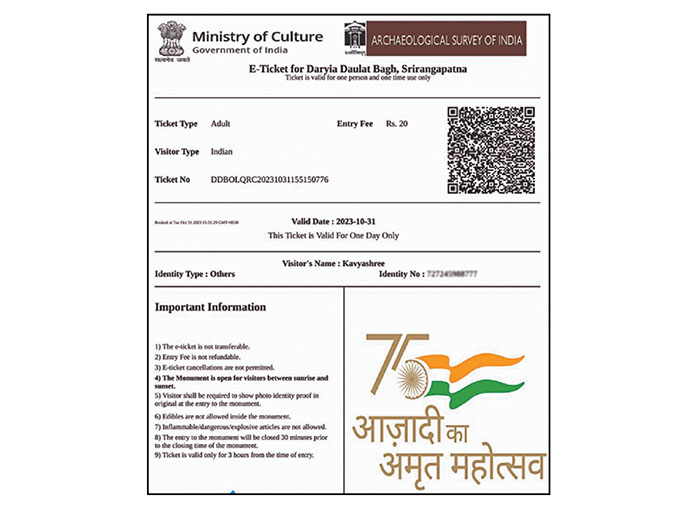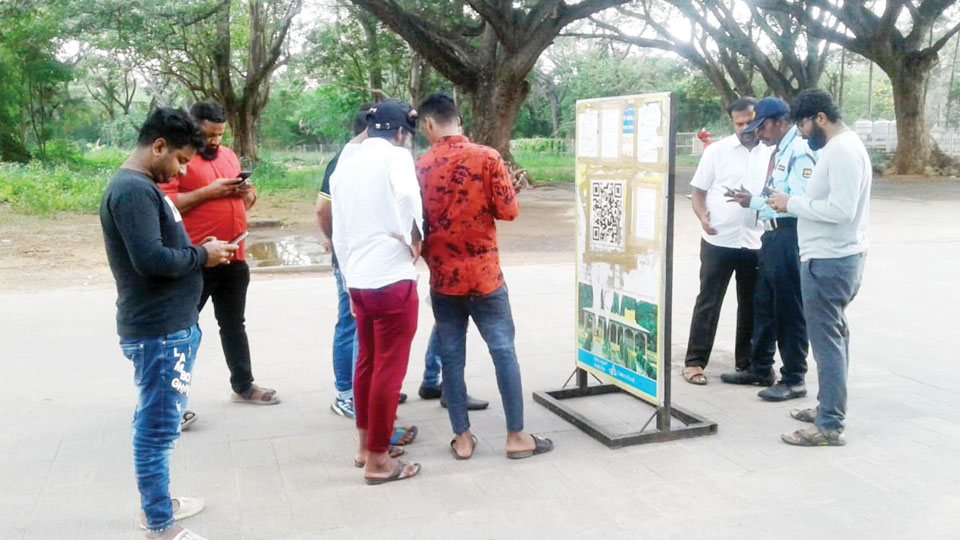Senior citizens unfamiliar with technology and those without smartphones leave without seeing monuments
By A. Ganesh
Mysore/Mysuru: The recently introduced digital ticketing system at various monuments protected by the Archaeological Survey of India (ASI) has become a source of inconvenience for visitors who may not own smartphones or lack familiarity with technology. Originally implemented during the COVID-19 pandemic for contactless ticketing systems and to promote physical distancing, digital ticketing has persisted even as the situation has eased.
Presently, two monuments in the Mysuru region have adopted this facility — Dariya Daulat Bagh (Tipu Sultan Summer Palace) at Srirangapatna and the Channakeshava Temple in Somnathpur (in T. Narasipur taluk of Mysuru), a remarkable piece of 12th-century Hoysala architecture that has been granted the prestigious UNESCO World Heritage Site tag.
There are plans to introduce a similar system for other monuments in Mysuru too. This shift to digital-only ticketing poses challenges for both local and outstation tourists, senior citizens unfamiliar with technology and others without smartphones, leaving them disappointed and unable to explore these historical sites.
QR code system with a lot of details
Visitors without prior knowledge are guided to standee boards placed in front of the monuments at entry points, encouraging them to use the ‘scan and pay’ option. This method entails scanning the QR code on the banner, which redirects them to the ASI payment gateway.
To acquire tickets, visitors must scan the QR code and provide details such as the date, preferred time slot, nationality, the number of visitors, and a contact number, along with identity documents like a passport, PAN card, driver’s licence, or voter ID card, among other options.
Once the QR code is scanned with the smartphone, it directs users to the website https://asi.payumoney.com. On the website, choose the preferred time and input the required details. The number of visitors and their names must be mentioned, along with the identity details and phone number of any one visitor. The user is then redirected to a payment gateway where they can choose the platform to make the payment.

Source of difficulty
Despite the intended benefits of streamlining the process, saving time, reducing paper usage and encouraging cashless transactions, the QR code system has proven to be a source of difficulty for many travellers. Standing in line to purchase tickets has become cumbersome and the system’s complexity has led to frustration, particularly for those facing network issues or relying solely on smartphones for communication.
Travellers, especially from rural areas, find it challenging to navigate the process due to a lack of awareness. Instances of visitors returning without exploring sites due to the complexities of the system have become increasingly common.
Demand for both online, offline systems
Many tourists are demanding the reinstatement of previous ticket counters at these locations. Even several college students and young working professionals are struggling with the mechanism. Monument lovers and experts make a case for the provision of both online and offline ticketing systems.
“To book the ticket online, one has to give a lot of personal information, which is irritating. Moreover, the process is exclusionary and restricts access to those who may not have a smartphone or internet,” said Sandeep Chouhan, a visitor from Bengaluru.
Historians said that restricting access through any means was uncalled for. Heritage places belong to the whole nation. Every citizen should have access to these places; it is a right and an essential part of education. For many people who have forgotten the history they studied at school, visits to heritage places become a way for them to gain education about history, they said.
The QR code scanning for ticket purchases has been implemented by the Archaeological Survey of India (ASI). The response to this system will be observed in the coming days, as its application is planned to be extended to the tourist spot in Mysuru as well. —A. Devaraju, Commissioner, Department of Archaeology, Museums and Heritage








Recent Comments